There are different types of wild cats spread across (most of) the planet, and although very distinct from one another, they are all equally fascinating and critical for their ecosystem.
These majestic, and many times cute, felines vary in size, fur, and habitat, but they also share many traits.
In today’s article, we’ll talk about what the definition of a wild cat is, a few wild cat types from different continents, a bunch of fun facts, and answer many questions about the types of jungle cats.
What Is a Wild Cat?
A wild cat is a cat that is a member of the Felidae family and is indigenous to the Americas, Asia, Africa, and Europe. Only Antarctica and Australia don’t have any types of wild cats.
Lions, jaguars, tigers, and leopards are the only felines that belong to the Pantherinae subfamily. All other species of wild cats belong to the Felinae subfamily.
Types of Wild Cats
Here’s a list of wild cats in all continents where they are extant.
Wild Cats in Africa
While you can find all wild cats of Africa here, below is a short list of African species of wild cats divided into small, medium, and big.
Black-Footed Cat – A Small Wild Cat in Africa
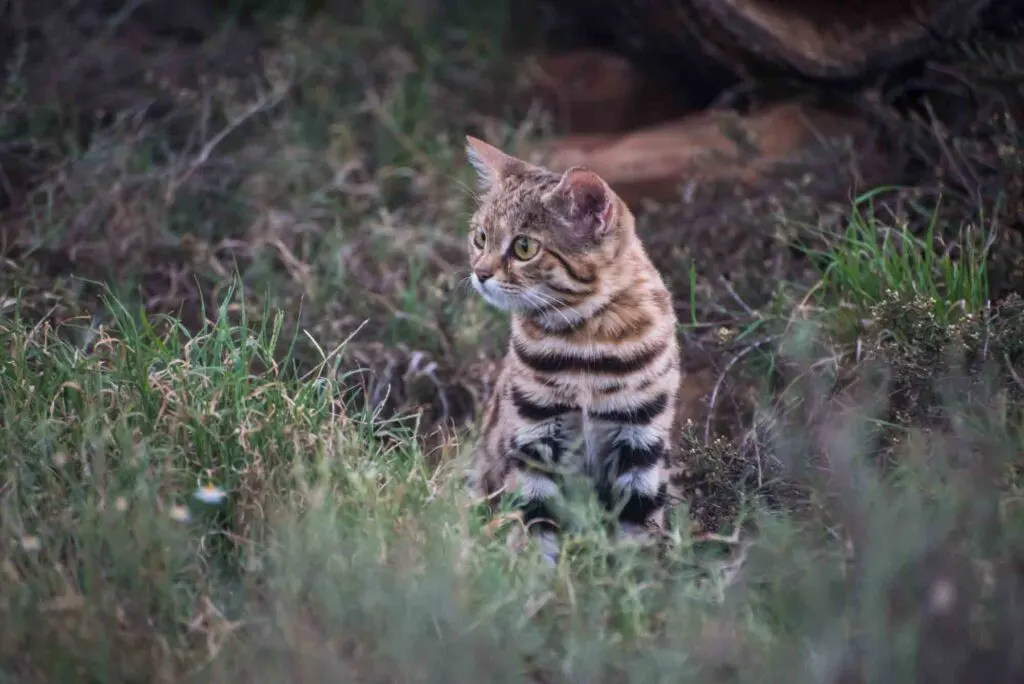
The black-footed cat is the smallest wild cat in Africa and the second-smallest wild cat in the world, after the rusty-spotted cat.
With a dense, smooth coat that varies from dark to light tawny gold, this type of wild cat has a striking pattern of rounded, dark brown to black spots that occasionally combine to form bands or rings.
In addition, these wild cats only live in African deserts and short to medium-high grass plains in Southern Africa – Botswana, Namibia, and South Africa.
Despite their size, they are one of the most aggressive and skilled hunters among African wild cats. They sneak up on prey before attacking and have been known to catch flying birds.
Caracal – A Medium Wild Cat Species in Africa
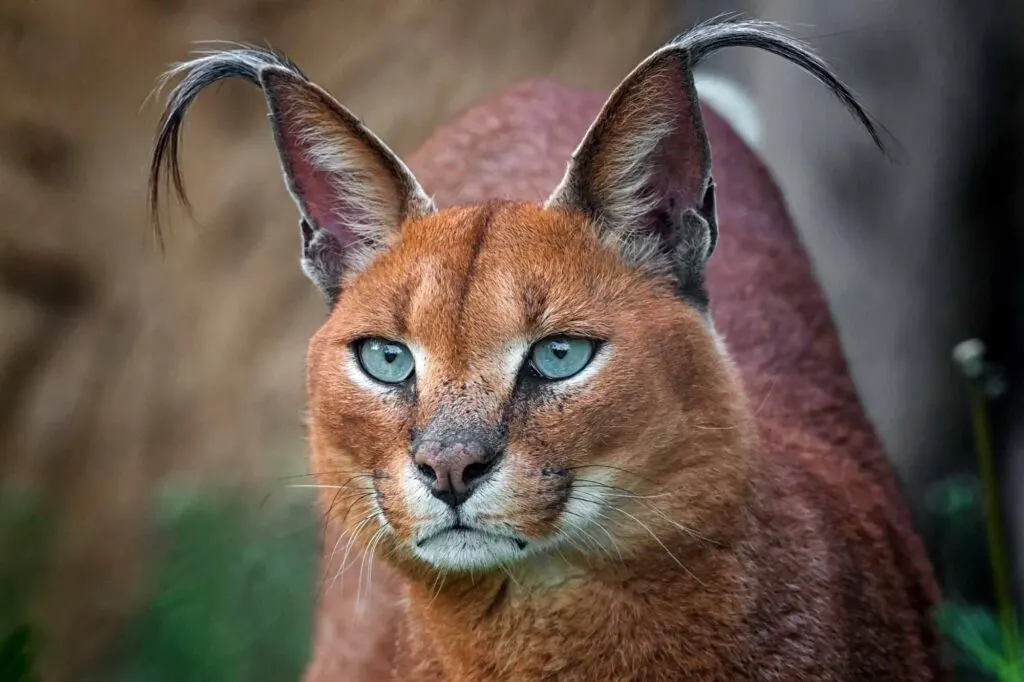
Caracals have tawny to reddish gold coats with white patches on the underside, neck, and chin.
These types of wild cats are distinguished by their broad, pointed ears with black tufted tips.
Caracals are opportunistic hunters who will take any prey they can get their hands on, including tiny monkeys, birds, young antelopes, mongooses, fish, reptiles, and rodents.
They can jump up to 10 feet high on their powerful hind legs and catch birds in the air with their strong, hooked claws. Also, caracals occasionally climb trees and hide their prey.
Although they live across the continent, from South to North Africa (mostly in East Africa), they can also be found expanding to the Middle East, Central Asia, and India.
African Lion – A Big Cat in Africa
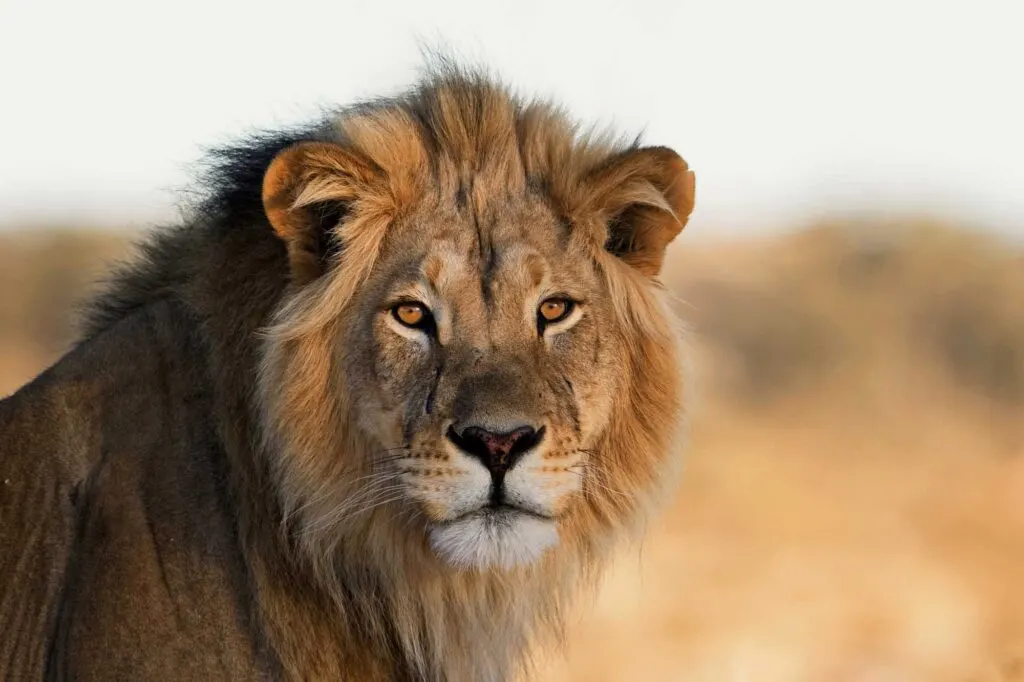
African lions are considered one of the big five animals and have some of the most muscular bodies in the wild cat family. They are second in size only to tigers – and roars that are heard five miles away.
Juveniles have a few light patches that go away with age, and an adult lion has a yellow-gold coat.
African lions can live in sub-Saharan Africa, preferring scrubs, grasslands, or open woodlands, where they can hunt more effectively.
With a modern social organization, African lions live in groups where the females are the main hunters and leaders.
These big cats frequently cooperate to prey on wildebeests, zebras, buffalos, giraffes, and impalas.
Wild Cats in the Americas
While you can find all wild cats of the Americas here, below is a short list of American wild cats divided into small, medium, and big.
Guiña – A Small Wild Cat in the Americas
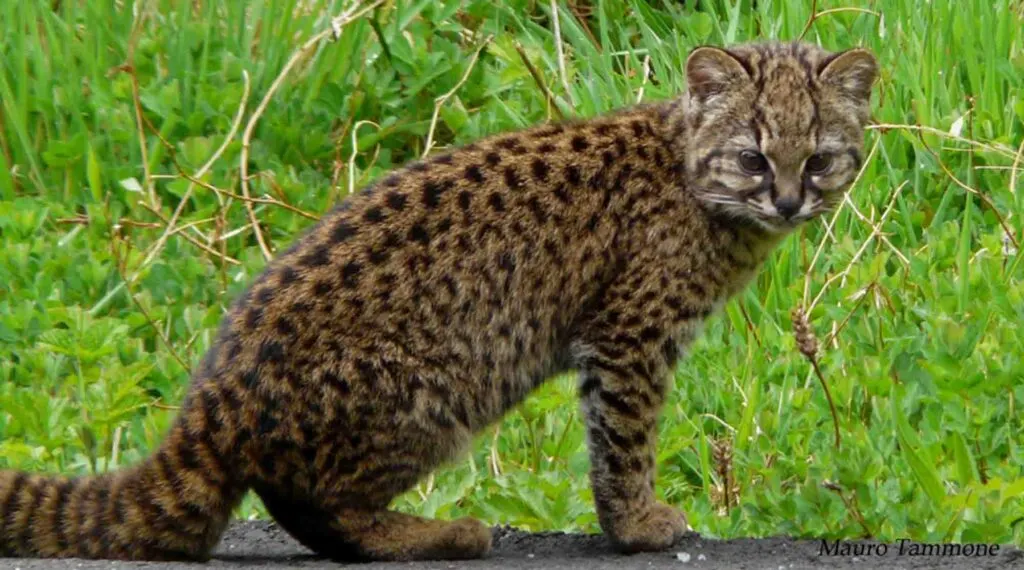
When talking about different types of wild cats, we have to mention guiña, also known as kodkod.
Native to South America, kodkods are the smallest wild cat in the Americas.
Their coat ranges from brownish-yellow to grayish-brown with dark spots, a pale underside, and a ringed tail.
Bobcat – A Medium Wild Cat in the Americas
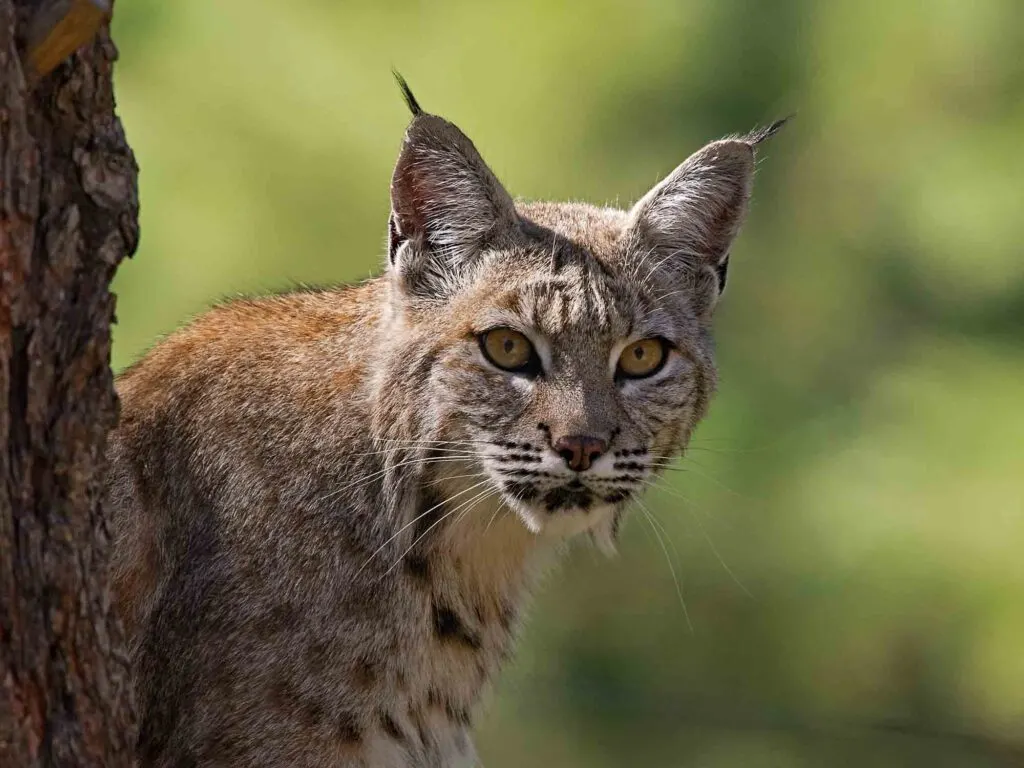
Bobcats are one of the most beautiful types of wild cats. They were given this name because of their small, bobbed tail, which has a black tip and is around 6 inches long.
Found mostly in North America, these wild cats typically consume mice, birds, fish, insects, lizards, rabbits, and other small wild animals.
Although it is a rare thing, bobcats are capable of swimming.
Jaguar – A Big Wild Cat in the Americas
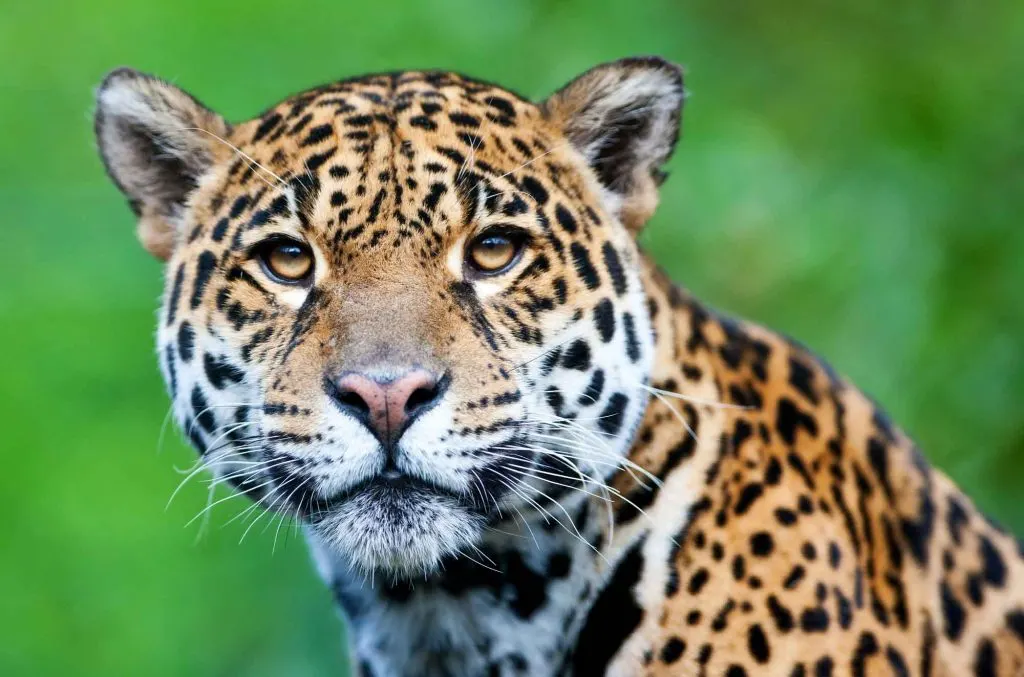
Full of superlatives, jaguars are the third-largest cat in the world, behind tigers and lions, and the largest big cat native to the Americas, from Mexico across Central America to South America.
Slender and muscular, jaguars are strong animals. They have pale yellow to tan-colored coat, which is uniquely marked with dark rosette spots. Each spot is different, and they vary in shape.
In addition, jaguars have decent swimming abilities, and they hunt fish, turtles, and even caimans. Needless to say, they are the apex predators in the Amazon, South America.
Wild Cats in Asia
While you can find all wild cats of Asia here, below is a short list of Asian wild cats divided into small, medium, and big.
Flat-Headed Cat – A Small Wild Cat Species in Asia
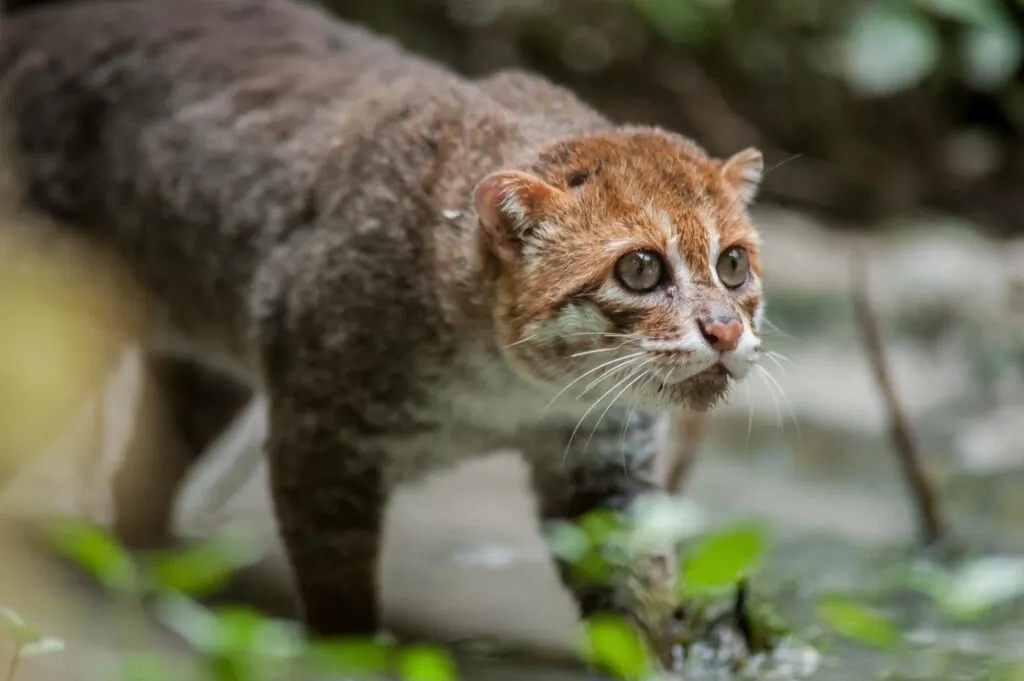
Flat-headed cats are cute wild cat species that prefer to live nearby freshwater sources as their primary food is fish and frogs.
These wild cats have light-colored fur with a white chin and muzzle. Two vertical stripes are located right between the eyes and on the sides of the nose. Their close-located eyes help to have stereoscopic vision.
Distribution-wise, flat-headed cats are found in Southeast Asia.
Mainland Clouded Leopard – A Medium Wild Cat in Asia
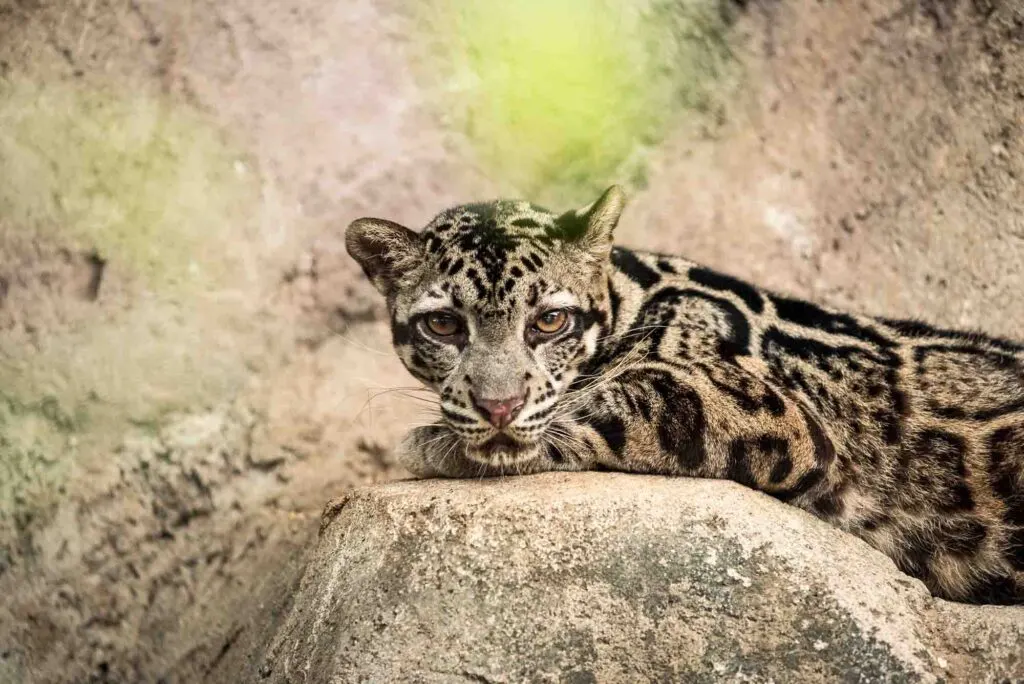
Mainland clouded leopards are native to Asia and live in forests and shrublands. Even though these types of wild cats like to stay up in the trees, it is believed that they hunt on the ground and prey on small mammals and birds.
These Asian wild cats have the body full of blotches and dark spots that can be gray, brown, black, and/or creamy.
In addition, these species of wild cats have a long tail that helps in jumping and moving from one tree to another.
Leopard – A Big Cat in Asia
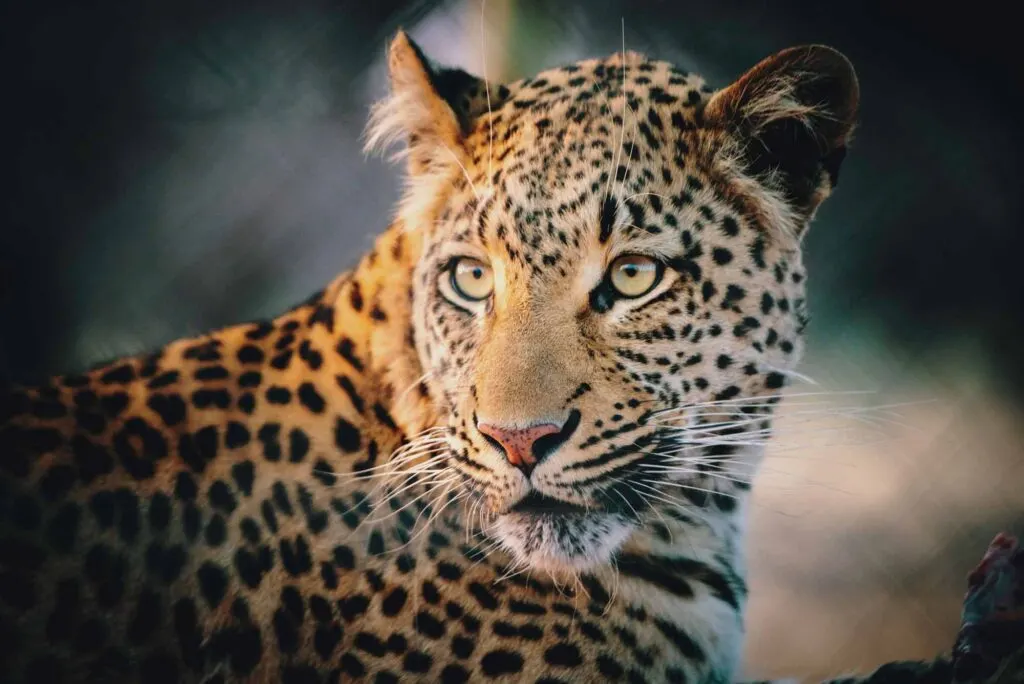
Often mistaken for jaguars, leopards are big species of wild cats from Asia. These felines live in a wide variety of habitats, including deserts, forests, and mountains.
Leopards are solitary creatures that only intermingle to mate.
They are opportunistic feeders, and their diet consists of a large variety of animals, mostly medium-sized prey. They are excellent climbers and drag their prey up into trees for eating and caching.
Wild Cats in Europe
You can find all the wild cats of Europe here.
Iberian Lynx – A Medium Wild Cat Species in Europe
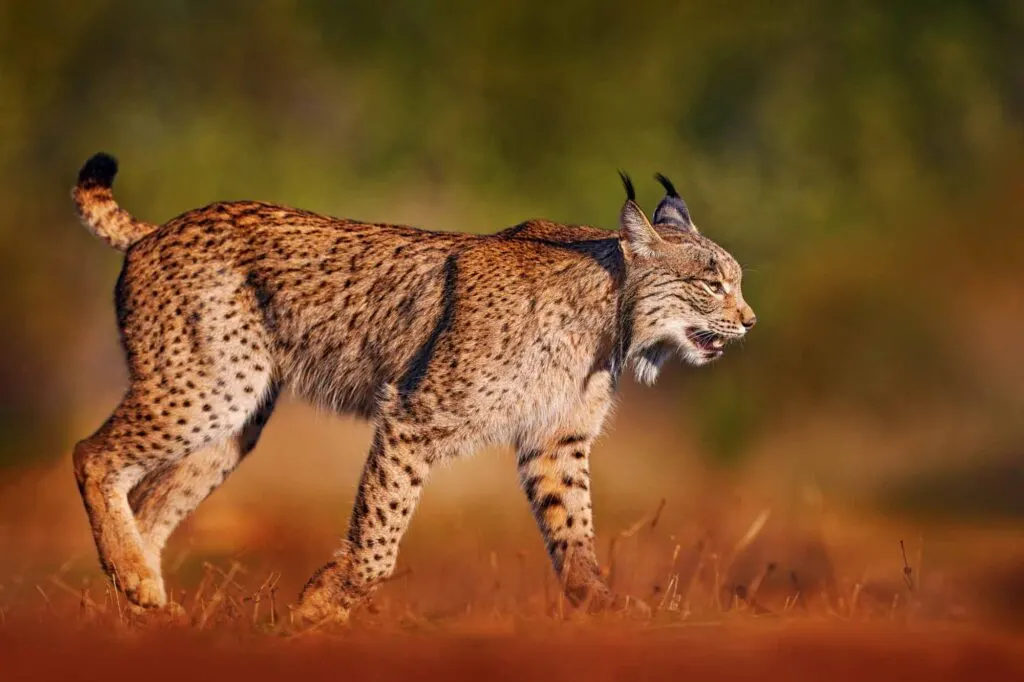
Iberian lynxes have yellowish to tawny fur coats covered with dark spots.
Unlike the Eurasian lynx, which is the wild cat in Europe with the broadest distribution, the Iberian lynx is endemic to a small part of the Iberian Peninsula.
Unfortunately, these wild cat types are listed as Endangered on the IUCN Red List. They had a substantial population decline in the 1900s because of poaching, overhunting, fragmentation of habitats, and the population decline of its main prey species, the European rabbit.
Fun Facts About Different Types of Wild Cats
The word caracal is derived from the Turkish word kara kulak, which means black ear.
The collective noun of lions is pride. So a group of lions would be called a pride of lions.
Jaguars have the most powerful bite of all big cats, making them one of the strongest animals in the world.
Lions and leopards are among the most dangerous animals in Africa!
Pumas are the only big cats in North America!
Unlike other wild cats, the pupils of Pallas’ cats contract into small circles rather than vertical slits.
Until 2007, the Chinese mountain cat was known only from six individuals living in Chinese zoos.
A black panther is not a separate species but a melanistic color variant of the leopard and the jaguar.
Marbled cats can hear ultrasonic sounds, which humans and dogs cannot.
Clouded leopards are actually known for having the largest canine teeth of any living cat in proportion to their body size.
The mainland clouded leopard uses its tail for balancing when moving in trees and is able to climb down vertical tree trunks head first.
The fishing cat’s ear contains 32 muscles and can rotate almost 180 degrees, so without turning its head, it is able to hear in several directions.
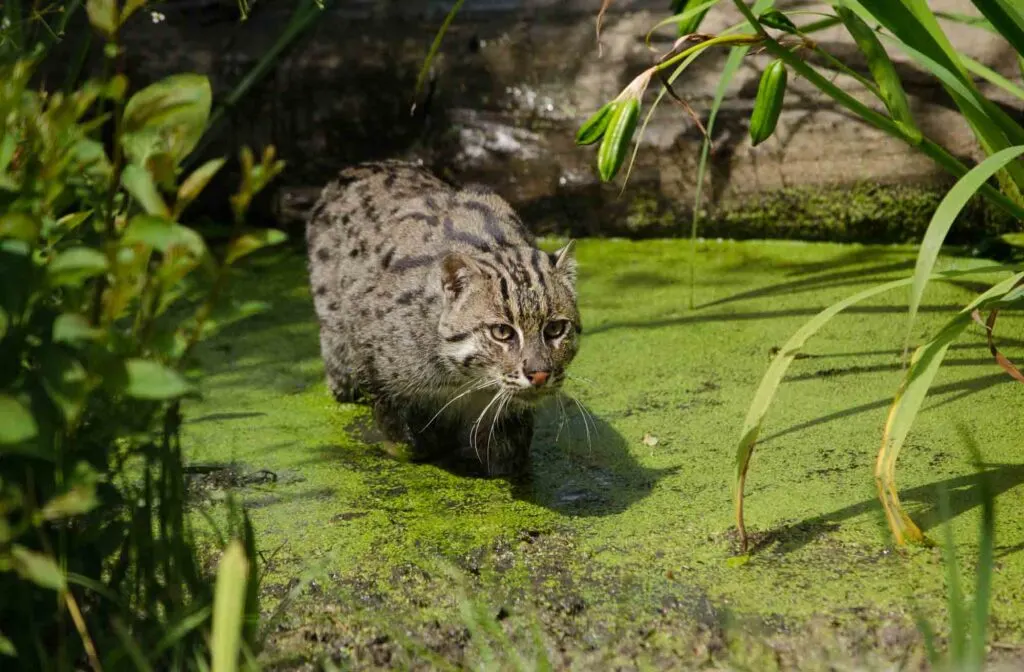
The Asian golden cat was first described in 1827 by Coenraad Jacob Temminck, a Dutch zoologist, and was named in his honor.
The Eurasian lynx is the third-largest predator in Europe after the brown bear and the wolf.
Sand cats are daring snake hunters and can live from water from their prey.
Ancient Egyptians used jungle cats for hunting birds and were featured many times in Egyptian art.
Pumas have a wide range, covering a large area of North and South America.
The African golden cat is referred to as “the brother of the leopard” maybe the main reason for this is that they share the same habitat and golden cats from Africa frequently follow leopards.
Flat-headed cats are about the size of domestic cats.
The Borneo bay cat is one of the most mysterious and rarest species of wild cats in the world.
The ears of Asiatic lions are visible at all times in males because their mane is considerably short.
Leopard cats have slightly webbed toes, facilitating swimming and movement on slippery ground.
The Asiatic cheetah diverged from the cheetah population in Africa between 32,000 and 67,000 years ago.
Snow leopards’ wide, fur-covered feet act as natural snowshoes – helping distribute their weight over soft snow and protecting them from the cold.
The serval has the largest ears of any wild cat.
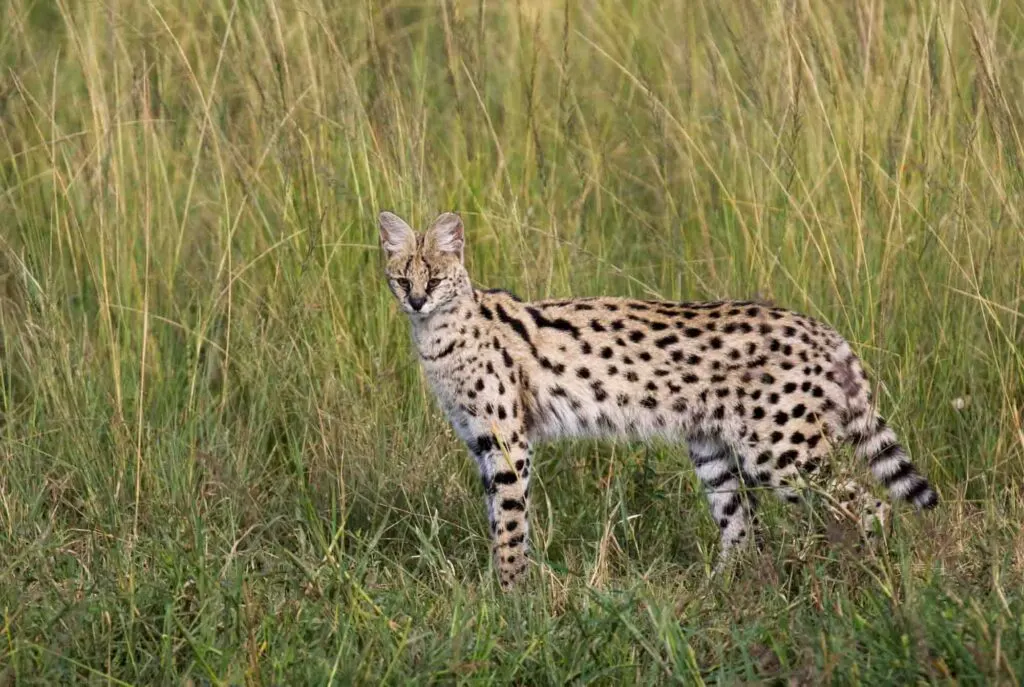
Because of their adapted retinas, leopards can see seven times better in the dark than humans.
The majestic leopards have an incredible sense of hearing. They can hear five times more sounds than a human.
Types of Wild Cats FAQs
How Many Wild Cats Are There?
Currently, there are 44 different species of wild cats in the world, as presented by the Cat Specialist Group, which are divided into big cats, like the lion, jaguar, and leopard, and small wild cats, like the rusty-spotted cat.
What’s The Biggest Wild Cat?
The biggest wild cat is the tiger, weighing up to 660 pounds. On top of that, tigers are among the strongest animals in the world, making them the strongest of all wild cats. Well, at least in paw swipe force. When battling with their prey, tigers can even exert up to 10,000 pounds of force when swiping with their paws.
What’s The Smallest Wild Cat?
The rusty-spotted cat is the smallest wild cat in the world, and it is half the size of a domestic cat. They can reach between 14 to 19 inches in length and up to 8 inches in height and weigh up to 4.5 pounds.
What’s The Rarest Wild Cat in The World?
Borneo bay cat is the rarest species of wild cat in the world. As their name suggests, they are native to Borneo, where few sightings have been recorded.
What’s The Fastest Wild Cat?
Cheetahs are not only the fastest cats but also the fastest land animals, with a maximum speed of 81 miles per hour over short distances.
What’s The Biggest Cat in North America?
The cougar is the biggest cat in North America. This big cat is also known as puma, panther, mountain lion, and catamount.
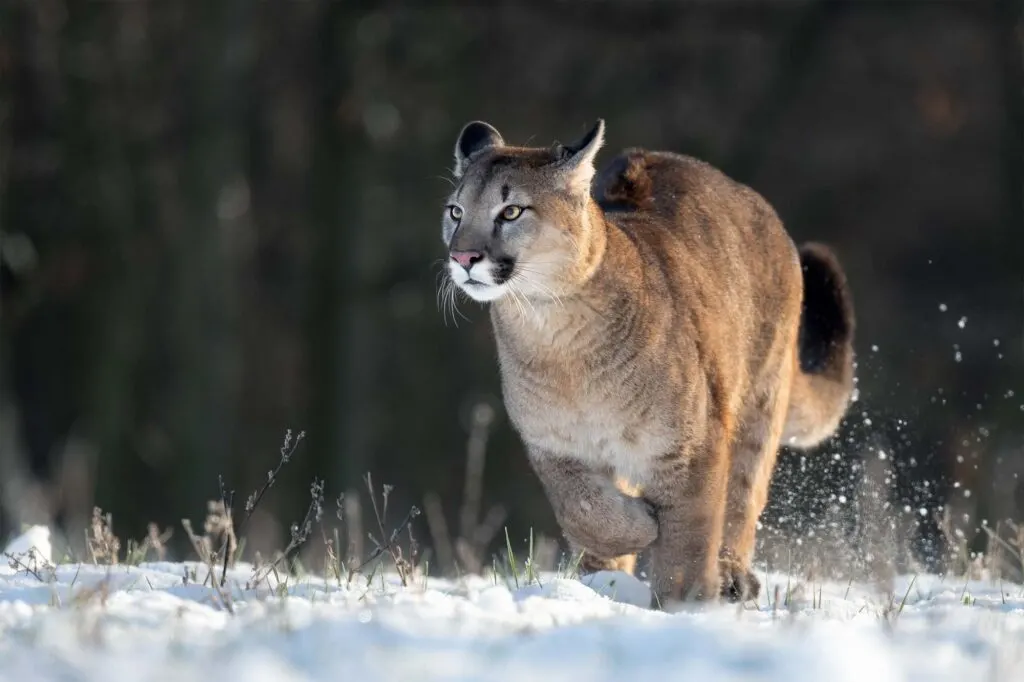
Do Wild Cats Meow?
No. Sadly, wild cat breeds do not meow. They have other ways to communicate and don’t need to meow since they don’t communicate with humans like domestic cats do.
What Cat Has The Strongest Bite?
Jaguars have powerful jaws. Actually, they have the most powerful jaws of all wild cats. The bite force of jaguars goes up to 1,500 PSI. However, the paw swipe force is no less powerful, and it can even swipe 500 pounds.
Which Cat Have The Loudest Roar?
By far, the lion has the loudest roar of all species of cats in the wild. Their roar can be heard five miles away and reach 114 decibels.
How Many Species of Wild Cats Are Threatened With Extinction?
About 24 wild cat species are currently threatened with extinction, according to the IUCN Red List. For this assessment, we considered the feral cats with status from Vulnerable to Critically Endangered.
What Are The Most Endangered Wild Cat Species?
The most endangered wild cat species are the Iberian lynx, Asiatic caracal, Asiatic cheetah, Borneo bay cat, Andean cat, Sunda clouded leopard, tiger, Asiatic lion, and flat-headed cat.
What Are The 7 Big Cats?
The seven big cats are the tiger, lion, jaguar, cougar, leopard, cheetah, and snow leopard.
What’s The Deadliest Wild Cat?
The answer will surprise you, but…the deadliest wild cat in the world is the black-footed cat because she hits her target 60% of the time.
Did you enjoy reading about the different wild cat types? Then share this article with your friends on social media!

Londyn Larsen
Monday 7th of August 2023
Good post! We will be linking to this particularly great post on our site. Keep up the great writing